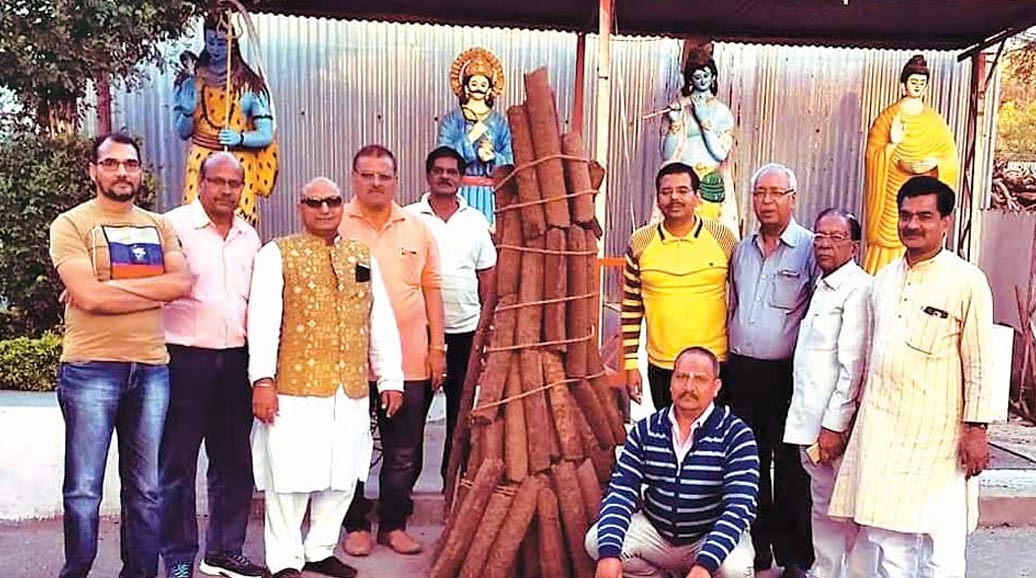
By : Dr. Sangeeta Rajgir and Mohd. Khalique
https://www.youtube.com/channel/UCjaCAA9my5XVeTSFj4_cWDQ
Birding In Tamia During Covid Era
Tamia is of great importance because of its geographical and scenic beauty. It is located at distance of 75 kms from Pipariya railway station and 58 kms from district head quarter Chhindwara. The Patalkot valley is spread over an area of 79 Sq. Kms. at an average height of 2750-3250 feet above Mean Sea Level from 22.24 to 22.29 ° North and 78.43 to 78.50 ° east. The valley is located at a distance of 78 kms from Chhindwara in the North-West direction and 20 kms from Tamia in the north-east direction. ‘Doodhi’ river flows in the picturesque valley (Acharya and Shrivastava, 2008). Main villages of the valley are : Rated, Chimtipur, GujjaDongri, SahraPachgol, Harra-ka-Char, Sukhabhand, Dhurnimalni, Jhiram, Palani Gaildubba, Ghatlinga, Gudichattri, Gaildubba, Kareyam, Ghana, etc. The government of Madhya Pradesh has declared Tamia a tourist place and in year 2015 and hence it is celebrated as the year of Tourism. The Patalkot Forest was so well hidden that people on the outside didn’t even know it existed. It is a very special place, rich with flora and fauna. The natives who live there know how to collect and grow the plants they need for food, clothing and building their homes. They also have a special skill that has been passed down every generation.
The Patalkot Forest was so well hidden that people on the outside didn’t even know it existed. It is a very special place, rich with flora and fauna. The natives who live there know how to collect and grow the plants they need for food, clothing and building their homes. They also have a special skill that has been passed down every generation.
During our birding trip we observed that there is very less information about birds available in Tamia, but we luckily met with Mr. Pavan Srivastava (Eco-tourism Promoter), he told us about some potential areas of birding. We also searched some old records and research papers about birds of Tamia but didn’t find any specific information.
So we started birding early in the morning about 6.00 am near Motel Tamia and our first beautiful sighting was Ultramarine Flycatcher (Ficedula superciliaris). Ultramarine flycatcher is smaller than a sparrow. The male is deep blue above, side of head and neck are deep blue. This bird is a local migratory comes from western Himalayas.
One more rare and endemic bird is sighted after this is White-spotted fantail or Spot-breasted fantail (Rhipidura albogularis). This bird is small passerine bird. It is found in forest, scrub and cultivation in southern and central India. This bird is endemic to the region of Tamia and Panchmarhi . The typical fan like tail is prominent feature of this bird. During breeding season male sings same pattern of songs every year with light changes, which become new song after 4-5 years. They made cup like nest on bifurcation of branches.
After walking for few meters we observed a thrush like bird at the top of the tree near Motel Tamia, We instantly recognised this as female of Blue-rock Thrush (Monticola solitarius). This bird is resident and a winter visitor. The blue rock thrush is a starling sized bird in length with a long slim bill. The male is of blue-grey plumage, females and immatures are much less striking, with dark brown upperparts, and paler brown scaly underparts.

A small waterbody behind the motel which forms small pools in various places. In these pools small sized birds come to bathe. Among these two blue coloured flycatchers, Tickell’s blue flycatcher(Cyornis tickelliae) and Verditer flycatcher (Eumyias thalassinus) have been seen. Tickell’s blue flycatcher is a blue coloured flycatcher with orange throat and breast. It is resident insectivores bird which found in dry scrub forest. They usually feed small insect but during breeding season it can catch small vertebrates. Another flycatcher is Verditer Flycatcher which are completely blue except dark line from eye to bill and grey vent. It is also a insectivores bird and migratory species which comes from the Himalayas.
A small flock of small minivet have seen in cultivated land near motel where there is a small pool with lotus. Around 25 species of birds have been seen in this area. On second day of our birding we cover area near beautiful Tamia lake. In the morning magnificent view of the lake is very mesmerising and the near-by forest area is full of bird call.
We observed lots of birds species as White-bellied Drongo (Dicrurus caerulescens), Indian Grey Hornbill (Ocyceros birostris), Rose-ringed Parakeet (Pisttacula karmeri), Plum-headed Parakeet(Psittacula cynocephala), Blackhooded Oriole (Oriolus xanthornus), White Browed Fantail (Rhipidura aureola), Indian Roller (Coracias benghalensis), Brown-headed Barbet (Psilopgon zeylanicus), Veriditer flycatcher (Eumyias thalassinus) etc. We also sighted some White-backed Vulture (Gyps Africanus) and a Common kestrel (Falco tinnuculus) around Patalkot area. Around 50 species of birds are been checklisted in Tamia in only two days of birding which proved the richness of this area.
Due to COVID-19 less tourist visit tamia, but the birds were enjoying this period very much as they were sighted everywhere with their routine activities. On the second day of our birding trip we left tamia with a promise that we will surely visit tamia for collection of data because this place is home to various endemic, rare and endangered birds also. So Tamia boosted us in this depressing situation of COVID-19 Era.




